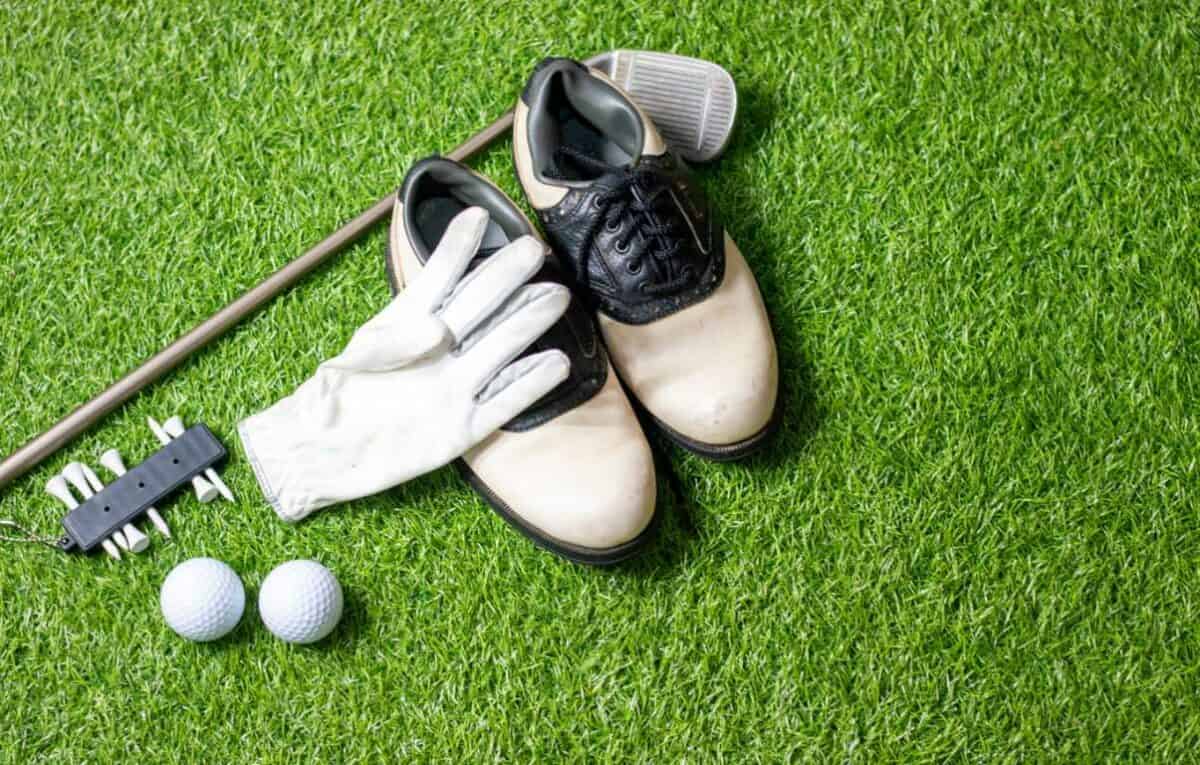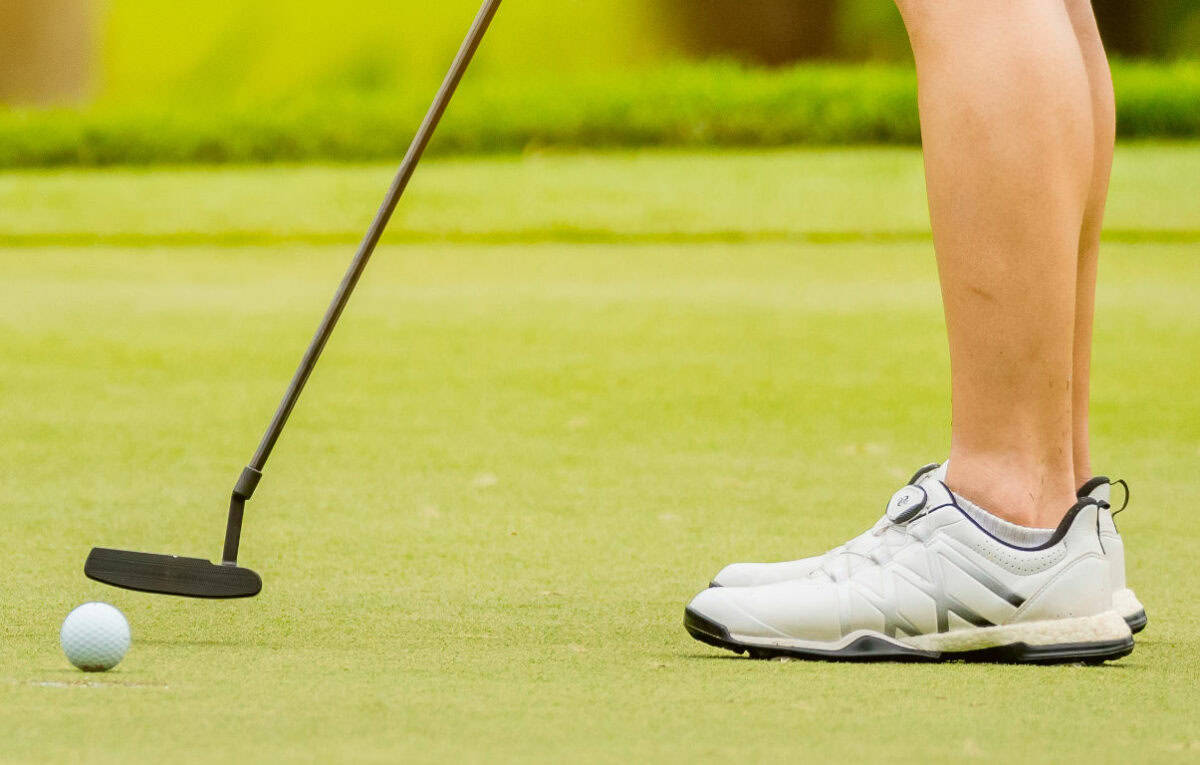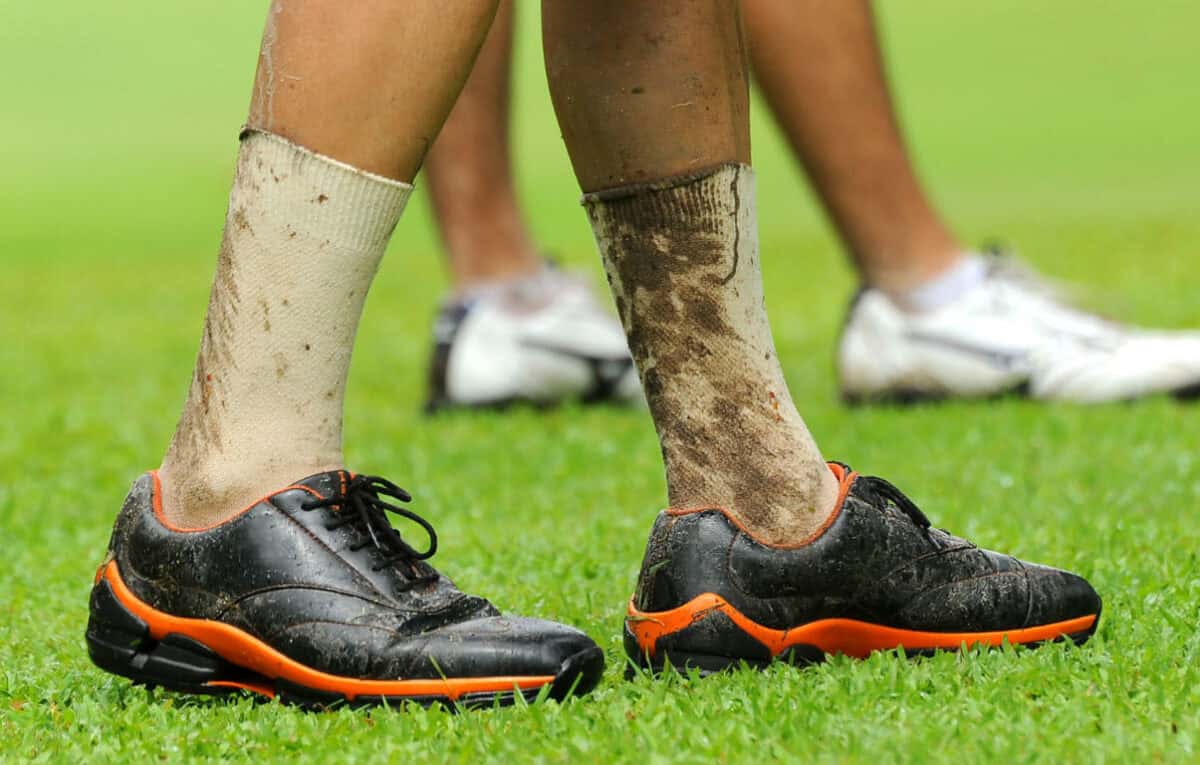What Are Golf Shoes? A Complete Beginner’s Guide
One key piece of equipment that can improve any golfer’s performance is proper golf shoes. But for newcomers, the array of golf shoe styles from cleated to spikeless and casual to athletic may seem overwhelming.
In this comprehensive guide, we’ll examine the different types of golf shoes, their key features, and how they differ from regular shoes, and help you determine the best footwear for your game as a beginner.

Why Wear Golf Shoes?
Before reviewing specific golf shoe designs, it helps to understand why golf-specific footwear provides advantages over standard shoes for the sport:
- The outsole traction pattern helps stabilize the swing by preventing slipping.
- Soft or hard spikes improve grip when swinging on grass, helping generate power.
- Golf shoes provide firm lateral stability but allow stepping through the shot.
- Athletic styles offer lightweight materials that avoid restricting the fluid golf swing motion.
- Waterproof models keep you comfortable and avoid soggy feet when playing in wet conditions.
Finding the right mix of traction, flexibility, and stability in golf shoes enhances performance.

Golf Shoe Styles and Categories
The two main golf shoe categories are cleated/spiked shoes and spikeless models. Within each are sub-types:
Cleated/Spiked Shoes
- Soft spike – Rounded plastic replaceable spikes screw into the outsole. Provide a firm grip.
- Hard metal spike – Fixed, permanent metal spikes. Aggressive traction but damaging to greens. Banned on most courses now.
- Removable cleat – Studs screw into receptacles but can be changed out. Good versatility.
Spikeless Shoes
- Textured sole – Nubs, lugs, or wavy tread instead of spikes provide grip.
- Hybrid sole – Combination of spikeless lugs with some soft spikes for added traction.
- Casual spikeless – More stylish, athletic sneaker-like shoes often worn off-course too.
There are also golf sandals with spikeless soles for very warm climates.
Key Golf Shoe Features
Beyond spikes and treads, golfers should evaluate these technical features when selecting shoes:
- Anatomical Shape – Curved instep design avoids irritating top of foot.
- Waterproofing – Water-resistant materials keep feet dry in wet conditions.
- Support Technology – Foams, gels or air pockets cushion feet and absorb shock.
- Lace/Strap System – Provides customized snugness and easy on/off convenience.
- Lightweight – Reduces swing interference and fatigue from walking.
- Breathability – Ventilation panels and mesh help expel interior moisture.
- Stability – Outsole width, traction and supportive uppers prevent rolling ankles.
- Cleat Receptacles – Rotating spikes requires flexible molded receptacles and wrench.
Buying Your First Pair of Golf Shoes
As a beginner, focus on these factors when purchasing your first golf shoes:
- Fit – Shoes should grip snugly with room to wiggle toes. Measure feet at peak time of day.
- Spike Configuration – Opt for soft spikes evenly spread across sole for stability. Or spikeless with multi-directional lugs.
- Water Resistance – Waterproof outer recommended for all-condition comfort.
- Budget – Don’t overspend on advanced tech shoes as a beginner. Look for sales on prior season models.
- Comfort – Cushioning technology protects feet and avoids aching. But a minimal break-in period is typical.
Getting professionally fit at a golf retail store typically provides the best experience in identifying the proper size and models for your needs as a beginner.

Golf Shoes vs. Standard Athletic Shoes
Why invest in golf shoes instead of just wearing typical sneakers or athletic shoes to play? Golf shoes differ in key ways:
- Spike grip – Cleats allow greater force generation through the swing by preventing sliding.
- Ankle support – Supports help stabilize the complex pivots of the golf swing motion.
- Tread patterns – Directionally engineered grip and stability for swinging not just walking.
- Waterproofing – Keep feet protected from morning dew and course moisture.
- Hitting groove – Lower sole flex point designed for natural swing movement.
The design of golf shoes matches the physical motions of the swing for peak performance.
Caring for Your Golf Shoes
To get the most life from your golf shoes and keep them performing well:
- Frequently clean dirt and debris from the spikes, treads, and soles.
- Rotate between pairs of shoes to evenly distribute wear.
- Replace spikes as they become worn down. Carry tools to repair cleats on course.
- Allow shoes to fully air dry after rounds before storing.
- Fill small spike receptacle holes with epoxy if converting to spikeless.
- Apply a waterproofing spray to keep materials from absorbing excess moisture.
- Store shoes away from direct heat sources and out of sunlight.
With proper care, quality golf shoes can deliver years of peak traction, comfort, and stability.
Men’s Golf Shoe Models
All the major golf brands like FootJoy, Adidas, Nike, and Ecco offer excellent golf shoes. Some popular men’s models for stability and traction include:
- FootJoy Pro/SL – Trusted spiked leather model offering generations of proven performance.
- Adidas CodeChaos BOA – Lightweight athletic style featuring removable spikes.
- Nike Roshe G – Casual lace-up design made for walking 18 holes comfortably.
- Puma Ignite Pwradapt Caged Crafted – Offers cushioned comfort and grip in a mesh spikeless shoe.
- Ecco BIOM Hybrid 3 – Combines traction of soft cleats with lugs for versatility.
Trying on options from major brands allows determining the right balance of comfort, grip, and features.
Women’s Golf Shoe Models
Women’s golf shoes utilize fit and stability engineered specifically for the female foot and gait. The top models to consider include:
- FootJoy Leisure – Highly breathable athletic-leisure style perfect for warm days.
- Adidas CodeChaos BOA – Available in cool colorways and offers spikeless or soft spike options.
- Nike Roshe G – Lightweight women’s model in various colors provides traction without bulk.
- ECCO BIOM Hybrid 3 – Offers excellent shock absorption and ground feel with a hybrid outsole.
- New Balance Golf Minimus SL – Low profile slip-on construction ideal for comfort and free movement.
Trying on shoes while wearing typical golf socks allows assessing the proper fit and flexibility for your swing.
Juniors Golf Shoes
For young junior golfers just learning the game, key features to look for include:
- Athletic comfort – Flexible, lightweight materials avoid interfering with movement.
- Durable construction – Tough synthetic uppers withstand active kids.
- secure fit – Lace-ups or Velcro straps ensure proper snug fit.
- Traction sole – Grippy rubber outsole suitable for multiple sports/activities.
- Water-resistant -Materials keep out the early morning dew.
- Support – Shock-absorbing midsole protects developing feet.
Affordable junior shoe models are available from brands like New Balance, Adidas, Nike, and Skechers.

Caring for Golf Shoes with Spikes
Maintaining soft spike golf shoes properly keeps them performing like new:
- Inspect spikes – Check for wear. Replace any damaged spikes. Fill holes if converting to spikeless.
- Clean debris – Use bristled brush and compressed air to remove debris lodged around spikes.
- Avoid waterlogging – Spike mechanisms can rust or cease if filled with water and mud.
- Tighten routinely – Ensure spikes are fully screwed in and tight using a wrench tool.
- Carry extra spikes – Swap out broken spikes immediately on the course using slim-fit toolkits.
Simple care allows getting the most life from your cleated golf shoes.
Signs It’s Time for New Golf Shoes
When is it time to upgrade your golf shoes? Signs include:
- Obvious wear on the sole exposing foam or fabric underneath
- Slipping, loss of traction during the swing
- Changes to original shape that squeeze toes or pinch
- Separating the sole or damage underfoot reduces stability
- Spikes struggling to tighten into receptacles
- Constant moisture or very quick water saturation
- Midsole compression, misshapen insoles, less cushioning
- Discomfort, pain, or limping after playing
Replacing worn shoes restores stability, traction, and comfort so you can walk courses pain-free.
Golf Shoe Etiquette
Along with enhancing your swing, golf shoes introduce some etiquette considerations:
- Keep spikes off parking lots, roads, and clubhouse floors – Reduce tracked debris that damages surfaces.
- Avoid excessive spike markings on greens – Limit damage and indentations. Walk gingerly.
- Clean shoes thoroughly before round – Remove debris that could embed in greens.
- Repair divots, and ball marks – Mitigate any course damage from shoes.
- Tighten loose spikes – Prevent metal tips from excessively damaging greens.
Being mindful shows care and respect for the course and other players.
Give Golf Shoes a Try
Making the small investment in quality golf shoes pays big dividends enhancing traction, power, and comfort over 18 holes. Don’t just wear old running shoes. Instead, experience the stability, foot support, and grip of shoes built for golf motion.
With a dizzying array of options, visit stores, try on various styles, and select the ideal spike or spikeless model matching your preferences, course conditions, and swing. Give golf shoes a fair chance and watch your footwork and focus to boost your game.

